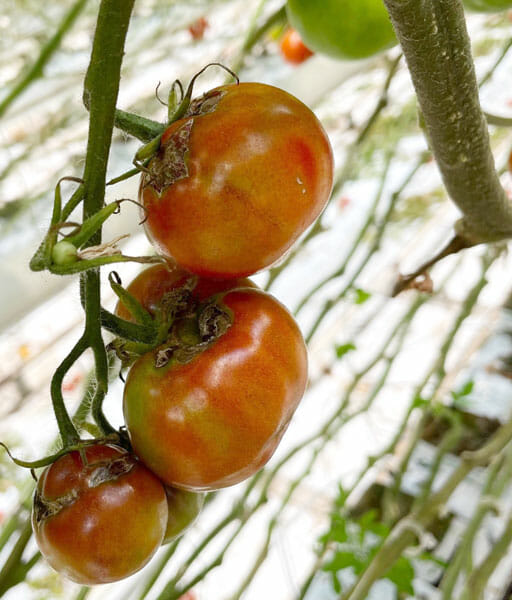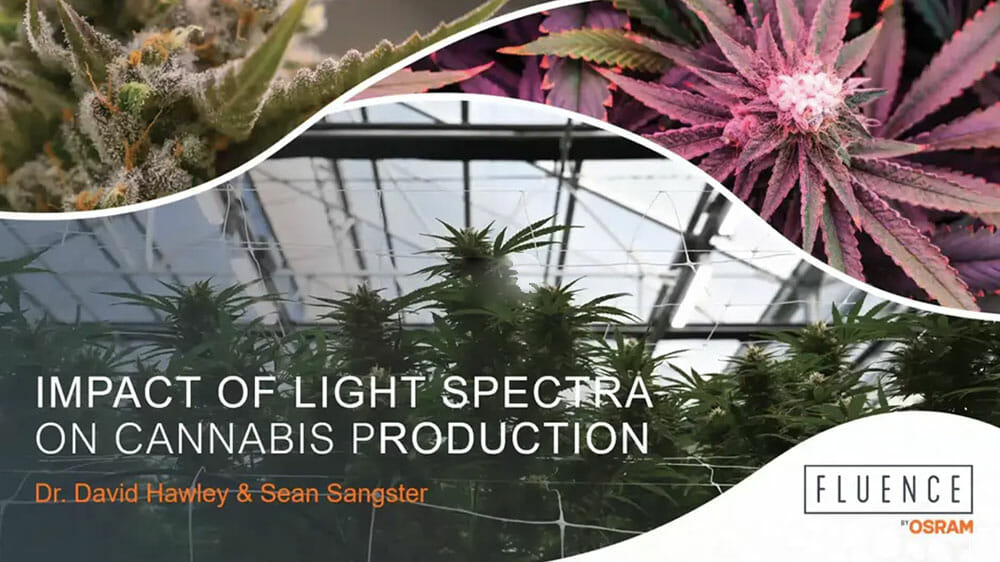How tomato growers can identify, prevent and limit the spread of tomato brown rugose fruit virus (ToBRFV)

Saman Soltaninejad Over the past 15 years, Sam has worked in vegetables and ornamental production in both controlled environments and outdoor cultivation from Asia to Europe and now in Canada. Sam has been involved with various R&D projects in research institutes and commercial facilities in regards to innovative and sustainable agriculture. In different positions, he has gained valuable experiences in artificial lighting, hydroponic production, conducting trials, and facilities management. Maximizing production and sustainable agri-food systems has always been his passion. He combines his multicultural and international experiences and skills with knowledge of horticulture to pursue his passion.

KEY TAKEAWAYS:
- Tomato brown rugose fruit virus—which is unaffected by the Tobamovirus-resistant genes currently used in commercial production—is highly resilient, adaptable and stable. It can live in soil, plant debris and on surfaces for months, making it one of the most highly transmissible and serious threats to individual operations and global tomato production ever seen.
- Growers should immediately adopt preventative measures even if they don’t see visible signs of the virus. Enhanced disinfection and even more meticulous observation should become standard operating procedure for every tomato grower.
- Early detection and eradication are critical to operational survivability. If allowed to spread, the virus can infect up to 100 percent of each affected crop and can cause 30 to 70 percent losses or more.
- Plant pathology researchers and geneticists have identified more than two dozen genotypes that provide intermediate resistance and one genotype that shows high resistance. Those seeds, however, are still years away from being introduced to the market.
TERMS TO KNOW:
- Tobamovirus: A genus of highly-stable, highly-resistant, and highly-transmissible viruses that infect a range of crops and plants, including tomatoes, peppers, tobacco, eggplant and potatoes. .
- Tomato brown rugose fruit virus (ToBRFV): A strain of tobamovirus unaffected by resistance genes in tomatoes that has emerged as the most serious threat to global tomato production.
- Intermediate resistance (IR): Genes that partially inhibit the spread of a specific pathogen. Plants with IR genotypes can still become infected and show symptoms, albeit less severely than varieties with no resistance.
- High resistance (HR): Genes that severely restrict the spread of a specific pathogen.
The Challenge
Tomato brown rugose fruit virus (ToBRFV) has emerged as one of the most serious threats to global production in decades. Greenhouses and other indoor environments that require frequent crop handling are most at risk, as the virus is highly transmissible and can live on surfaces—like plant debris, clothing, tools and machinery—as well as in the soil—for up to several months.
ToBRFV has the ability to overcome the resistance in current cultivars based on their genetic makeup. Without a natural defense against ToBRFV, entire harvests are at risk if the virus is introduced into an environment, threatening total loss of production and revenue.
Other factors also significantly hinder growers’ ability to identify, prevent or eliminate the virus.
-
- While tomatoes infected with ToBRFV will often show symptoms (listed below), other variants of the virus won’t yield any visual symptoms at all, making detection nearly impossible.
- The potential for misdiagnosis is high, as common symptoms—particularly in the leaves and fruits—of ToBRFV can often be mistaken for other viruses, including pepino mosaic virus (PepMV), physostegia chlorotic mottle virus (PhCMoV), ToMV and TMV.
- Visual detection is never enough to confirm the presence of ToBRFV. Serological methods such as strip tests are the first step to detect the presence of this virus. Additional measures are always recommended.
The Solution
Preventative measures every tomato grower needs to adopt immediately
As with any virus or disease, prevention is always the best course of action. Enhanced sanitation protocols simply need to become a part of every tomato grower’s standard operating procedures until new genes resistant to the virus are introduced to the market. That milestone, however, is still years away, so growers have to stay diligent and hyper-attentive on everything from disinfection measures to crop handling to waste disposal.
Here are some immediate actions to implement:
-
-
-
- Clean all surfaces that come into contact with even one plant multiple times per day.
- Disinfect all tools, equipment and machines moving between each operational zone
- Wear disposable gloves and clothing when handling crops or moving between zones.
- Reassess your waste management approach. Waste disposal methods, like dumpsters, are often shared among neighboring farms and operations, risking mass contamination and infection.
- Similarly, farms often share fertilize bins and totes that rotate among neighboring farms through third-party suppliers. Consider shifting such practices to reduce the risk of infection from other farms.
No operation will be completely safe from contamination, and the additional operational expenses incurred to prevent the spread of ToBRFV could be significant. But remember, it is better to make that investment now than to risk total production and revenue loss in the future.
How to identify and diagnose tomato brown rugose fruit virus Daily visual inspection is always the first step but never the only one. Growers should regularly examine the leaves, stem, petioles and calyces, and fruits for symptoms.
- Leaves: Examine the leaves, particularly the younger ones at the top, for chlorosis—mosaic patches of yellow in leaves that are normally green. Also inspect the leaves for deformation—in the form of needle-like leaves on side shoots and the head of the plant—as well as surface blisters and wilting.
- Stems: In severe cases, some plants’ stems may form necrotic brown lesions.
- Fruits Look for deformation, uneven ripening, fewer fruits per truss, and blotchy and chlorotic spotting.
In cases where you suspect a plant or area of your operation has been infected, a three-pronged testing approach is needed. First is visual inspection. Growers should conduct striptests to confirm the presence of a tobamovirus, and further testing can reveal which tobamovirus is infecting the plants. Other ways to identify and diagnose ToBRFV include AmpiFire from Agdia and molecular tests such as ToBRFV RT-PCR or q-PCR, the ELISA test, and sequencing. Due to the possibility of false positives from striptests, multiple avenues (especially molecular tests) are best.
For a full list of steps and procedures, you can read the most recent update and response plan from the U.S. Department of Agriculture here.
How to dispose of infected crops and eradicate the virus:
- If you confirm the presence of ToBRFV, immediately begin comprehensive disposal and removal of all materials associated with the infected plants like debris, string and growing media. Do not move anything from the infected area to other zones or areas of your facility.
- Build a disinfectant station and mat at the entrance to your facility.
- Clean the facility with high-pressure water and detergent to remove traces of organic matter.
- Disinfect all surfaces in and on the greenhouse.
- Clean all tools and equipment with a virucidal agent, such as Clorox or Lactoferrin (subject to the laws and safety procedures allowed for greenhouse application in country of use). You can find a recent study on the effectiveness of more than a dozen virucidal agents against ToBRFV here.
Do not, under any circumstances, compost plants or materials infected with the virus. The USDA recommends burning or steaming infected materials, with a minimum internal temperature of 212 °F (100 °C), then burying any remaining materials in a landfill.
Alternatively, use plastic bags thicker than 2 mil, double bag the infected plants, containers and materials, all leaf debris in and around the infected area, and bury the bags at a depth of more than 6 feet on-site, at a USDA-approved site, or a municipal landfill.
Researchers have identified a genotype in tomatoes that is highly resistant to ToBRFV, as well as 28 genotypes that have intermediate resistance. Until those seeds are introduced to the global market—which is likely still years away—diligent observation, regular testing, proper disposal and thorough sanitation are the only weapons growers will have to protect their crops, operations and revenue.
-
-





